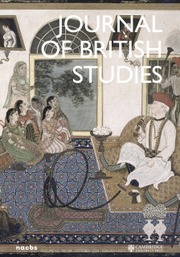In recent years, a renewed emphasis on the American Revolution as a military conflict has prompted historians to probe the complexities of revolutionary allegiances. Not everyone was a Patriot or a Loyalist; in fact, committed partisans were outliers among American colonists. Some people were flexible in their allegiances—deploying loyalty as a self-interested strategy for profit or survival. Still others simply tried to endure the war by remaining neutral. It is this final group that Aaron Sullivan examines in his excellent new book, The Disaffected: Britain's Occupation of Philadelphia During the American Revolution. Centering the experiences of people who were “pursued, pressured, and at times persecuted, not because they chose the wrong side in the Revolution, but because they tried not to choose a side at all,” Sullivan restores an important perspective to our understanding of the war and its impact on American communities (6). When viewed from the perspective of the disaffected, the Revolution appears messier—a messiness, Sullivan argues, that makes the conflict at once more complex and more human.
Disaffection, Sullivan explains, was often “a matter of pragmatism, not principle” (7). Many Philadelphians viewed the Revolution as neither a patriotic fight for liberty nor an unnatural rebellion. It was a distant conflict that had little to do with their lives and families. All of this changed, however, when the British army captured the city in September 1777. Focusing on the nine months that the British army resided in Philadelphia, Sullivan analyzes how this moment of “transition and insecurity” forced a new reckoning of political identification as both American politicians and British military officials attempted to define the people and their politics (5). Patriot leaders, in particular, attempted to stifle dissent by branding any inhabitant who did not fully endorse the revolutionary government as an enemy. As the British army made its way toward Philadelphia, the Continental Congress exiled twenty-two of Philadelphia's prominent Quakers from the city. This incident lays the groundwork for Sullivan's narrative, as he examines the lives and priorities of these men, their families, and others like them, who found themselves in the crosshairs of a war that they had desperately tried to avoid. Centering on Philadelphia's disaffected inhabitants, Sullivan offers a new perspective on the American Revolution and makes a persuasive argument about the nuances of revolutionary allegiance. Disaffection existed alongside patriotism and loyalism, and for many people, it was the surest route to safeguarding their families, property, and principles. Even so, disaffection was no guarantee of security—in fact, in many instances, it had quite the opposite effect. Sullivan observes that partisans on both sides of the conflict denounced the disaffected as apathetic and selfish—a confluence that suggests the existence of a population that defied easy definition and constituted “a category unto themselves” (10). This previously overlooked group, Sullivan contends, is essential to understanding the war, its politics, and its consequences. Disaffection complicates our understandings of revolutionary allegiances by illustrating the spectrum of political identities and underscoring the hardship that many Americans encountered as a consequence of their ambivalence.
British occupation, Sullivan suggests, presents an opportune moment to examine these dynamics, as the immediacy of the moment forced people to make choices that exposed the complexities of their allegiances (or lack thereof). Recognizing that the modern term occupation implicitly casts the British army as foreigners—a perspective that not all Americans would have embraced—Sullivan nevertheless employs the word because it most effectively conveys the “many moral and practical difficulties” that the British encountered as they attempted to subdue Philadelphia's civilian population (12). Tracing the experiences of Philadelphia's disaffected as they navigated a city under military rule, Sullivan's analysis progresses chronologically. He considers topics ranging from exile and allegiance to trade, the management of household resources, and the process by which neighborhoods and communities rebuilt their lives in the aftermath of military occupation. In addition, Sullivan examines these dynamics at a level of personal experience by threading interludes throughout the book that follow the Philadelphians James Allen and Elizabeth and Henry Drinker in order to illustrate how the disaffected and their families endured British occupation. Even so, he never loses sight of his larger argument: although disaffection was nonpartisan, it was not apolitical—it was a vital part of revolutionary politics that shaped the way British and American military officials, patriot leaders, and the disaffected themselves understood the war and its consequences.
The Disaffected is an important contribution to scholarship on the American Revolution. In clear, and evocative prose, Sullivan offers a nuanced analysis that refocuses the war on the experiences of those who wanted nothing to do with the conflict. He is a gifted writer, and his ability to tackle complicated historiographical questions in a relatable manner makes this book accessible to undergraduates and the general public. The American War for Independence, Sullivan reminds us, was for many Philadelphians simply something to be endured—a position that was increasingly untenable as hostilities ramped up in the face of British occupation. In the fraught political atmosphere of revolutionary America, the disaffected were an enigma; they fit uneasily in both their historical moment and national histories of the war. Bringing revolutionary Philadelphia to life, The Disaffected remedies this conundrum and convincingly restores the disaffected to their place in revolutionary politics.



